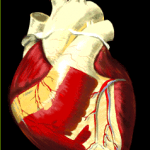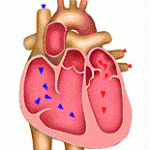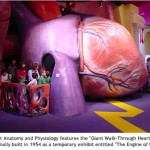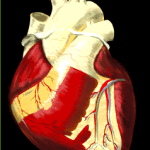Your Amazing HEART
Did you know that every second of every day something incredible happens inside your body? Most of us take our heart for granted, but if this extraordinary organ stopped working, you’d be dead. Learn how the heart is central to keeping you alive and healthy, by working non-stop to power the body, carrying life-giving nutrients and oxygen to all the cells.
Is the heart a muscle?
Yes. Located a little to the left of the middle of your chest, it is roughly the size of your fist. At http://www.kidshealth.org/kid/body/heart_noSW.html, you’ll learn that this special muscle works like two pumps in one, sending blood around your body. The blood provides your body with the oxygen and nutrients it needs, in addition to carrying away waste.
How does it work?
Think of the heart as a house, with four rooms, four doors, four big hallways and four small hallways. At http://childrensheartinstitute.org/educate/heartwrk/hearthse.htm, you learn that the four rooms represent the four chambers of the heart; the four doors represent the valves; the big hallways represent the big vessels; and the small hallways represent the small vessels. In short, the right side of your heart receives blood from the body and pumps it to the lungs. The left side of the heart does the exact opposite: It receives blood from the lungs and pumps it out to the body.
Do you know how fast your heart is beating?
To find out, visit http://americanheart.org/presenter.jhtml?identifier=2795.
You can feel your blood being pumped by your heart by putting the second and third fingers of one hand on the inside of the wrist of the other hand, just below the thumb. That’s your pulse! If you count the number of beats in one 60-second period, this is your heart rate per minute.
Ever dream of walking through a giant-sized heart to see how it works?
You can at The Franklin Institute in Philadelphia. Visit http://www2.fi.edu/exhibits/permanent/giant-heart.php for more information. You can also watch a video of this exhibit at http://youtube.com/watch?v=hw_qps3p4qU&feature=related, as well as others, if you type “Franklin Institute giant heart” in the search field.
T/F: Even at rest, the heart works harder than the leg muscles of a sprinting man. And, who discovered that the heart sets the body in motion?
TRUE. Play the heart game at: http://funschool.kaboose.com/formula-fusion/games/game_the_heart_facts.html?g=heart_ds1, and you’ll learn about this extraordinary muscle. In addition, visit http://wiki.answers.com/Q/What_are_interesting_facts_about_the_heart and http://www.health-alliance.com/contentarchive/July99/heart.html and you’ll learn many other facts about your heart, including it was the Ancient Greek physician Galen, who—in 100 A.D.—discovered that the heart set the body in motion.
On average, how many times does our heart beat each day?
According to: http://kids.nationalgeographic.com/Stories/SpaceScience/Truthaboutyourheart, an average heart beats a hundred thousand times a day. That means that in a lifetime, the average human heart will beat more than two and a half billion times.








